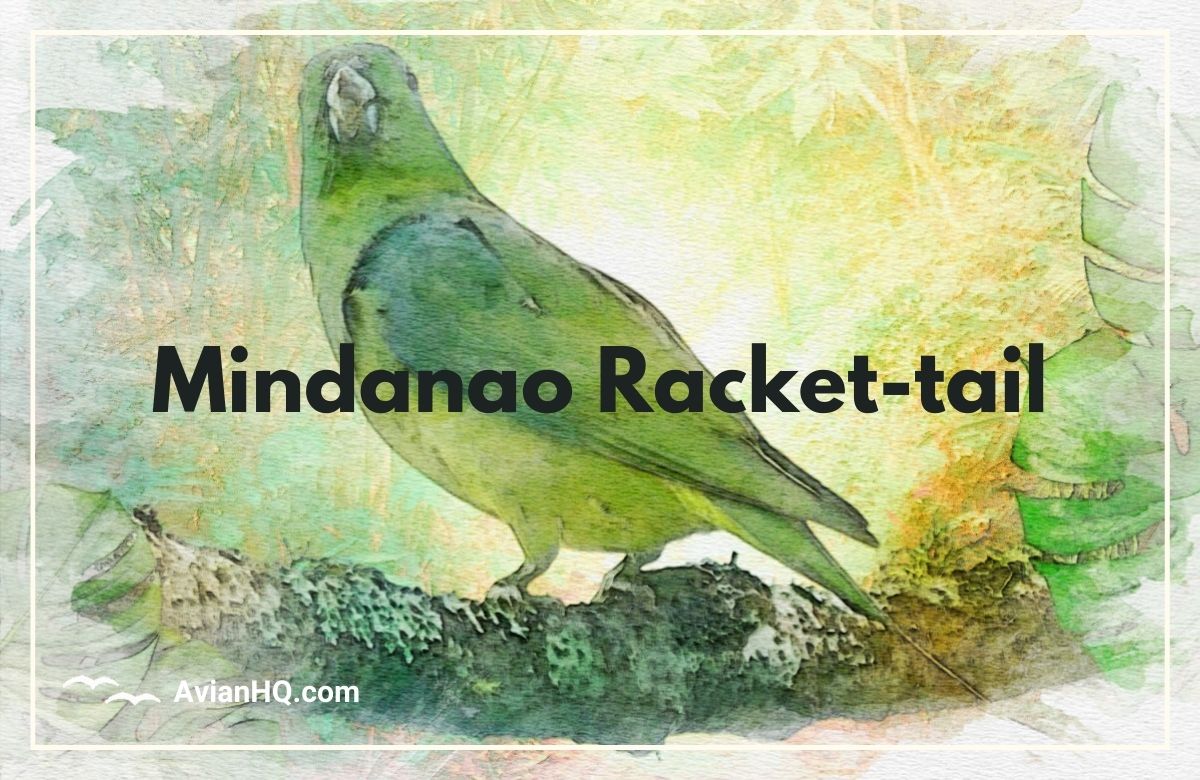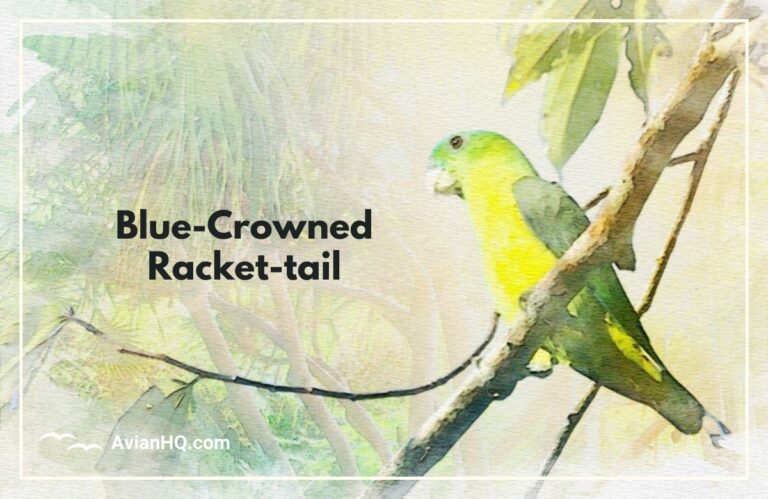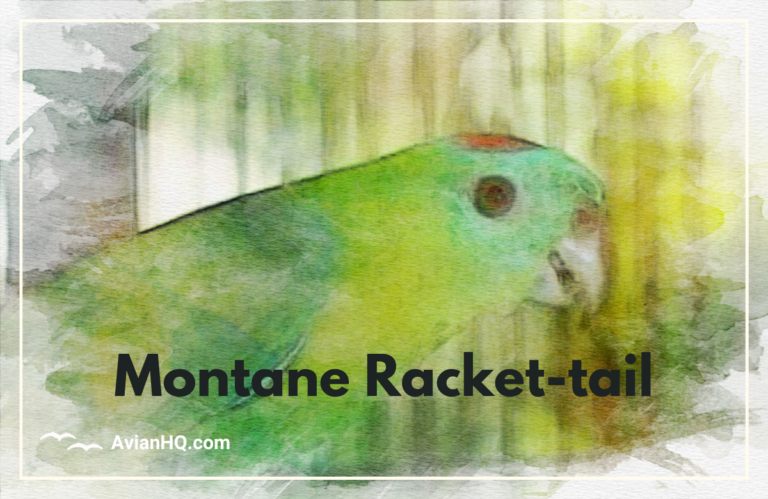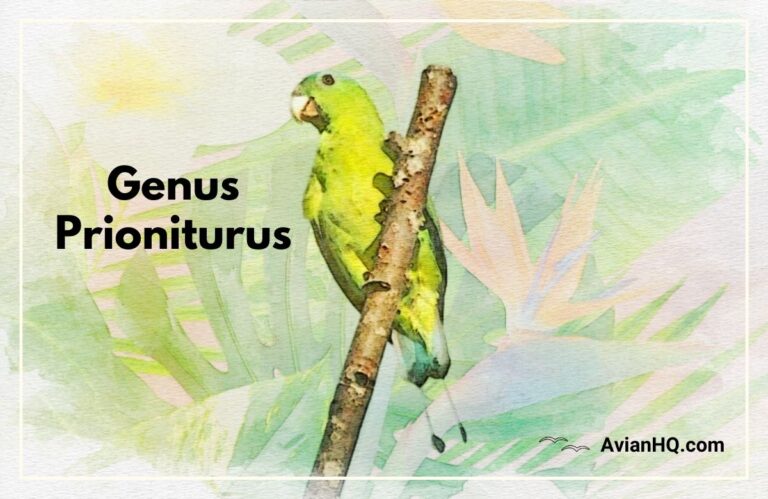Mindanao Racket-tail Parrot (Prioniturus waterstradti)
The island of Mindanao in the Philippines is home to incredible biodiversity, including many endemic bird species found nowhere else on Earth. One of these unique birds is the Mindanao Racket-tail parrot (Prioniturus waterstradti), a vividly colored parrot distinguished by it’s distinctive tail feathers. As an endemic species with a limited range, this parrot merits increased conservation attention to ensure it’s future survival.
This article will provide an in-depth look at the natural history, physical appearance, habitat, diet, breeding habits, conservation status, and research needs of the Mindanao Racket-tail. While superficially similar to other Asian parrots, the Mindanao Racket-tail possesses several distinctive traits all it’s own. There is still much to uncover about the behavior and ecology of this little-studied endemic.
Gain a deeper appreciation for the Mindanao Racket-tail’s specialized biology and the threats it faces today. Understanding more about this species can help inform future research and strengthen protection efforts for the parrot and it’s diminishing forest home in the Philippines.
Physical Appearance
The Mindanao Racket-tail is a medium-sized, stocky parrot measuring approximately 11.7 inches (30 cm) in length and weighing between 4.2-5.6 ounces (120-160 g).
Males and females exhibit some differences in their plumage colors and patterns:
- Adult males have a pale blue forehead, lores, and area beneath the eyes. Their upperparts are washed with brown, while the lower back is greenish-brown. The belly is olive to green in color.
- Adult females have similar patterning but paler blue on the forehead and around the eyes. Their back plumage also shows less brown than males.
- Juveniles resemble adult females but lack the specialized tail feathers.
The most distinctive feature of this species is the pair of elongated central tail feathers that form paddle-like ‘rackets’ and give the bird it’s common name. These feather shafts are black, framed by broad black and blue bands at the feather tips. The remaining tail feathers are mostly green with black edging.
Other key features include:
- Bill: Blue-grey in color
- Eyes: Dark brown
- Legs: Grey
The Mindanao Racket-tail’s vibrant plumage and unique tail structure help distinguish it from other Philippine parrot species in the region.
Habitat and Distribution
The Mindanao Racket-tail is endemic to the island of Mindanao in the southern Philippines. It’s range is restricted to central and southeastern parts of the island.
This species occupies humid montane forest habitats at elevations between 850-2000 meters (2,788-6,560 feet). It’s preferred habitat is tropical moist forests along the slopes and mountains of Mindanao.
Some key localities where the Mindanao Racket-tail can be found include:
- Mount Apo
- Mount Matutum
- Mount Mayo
- Mount Kitanglad
- Mount Malindang
The Mindanao Racket-tail has also been recorded as low as 450 meters (1,476 feet) in elevation, but the core of it’s range and density is within montane forest from 850-2000 m (2,788-6,560 ft).
Protection of these highland forest ecosystems is crucial for conservation of the endemic Mindanao Racket-tail and other unique biodiversity. Habitat loss poses one of the major threats to the parrot’s limited populations.
Diet and Feeding Habits
In the wild, the Mindanao Racket-tail is presumed to feed on a variety of seeds, fruits, nuts, and berries obtained from native forest trees and plants. However, detailed analyses of stomach contents are still needed to fully document their dietary preferences.
Based on observations of related parrot species, components of the Mindanao Racket-tail’s natural diet likely include:
- Seeds from forest trees
- Various nuts and legumes
- Berries and fruits
This parrot uses it’s curved bill to extract and husk seeds from fruits, cones, and seed pods. Food is manipulated and eaten with the foot while perched.
Foraging takes place individually or in small flocks in the high canopy of montane forest trees. The birds move through the trees searching for ripe fruits and seed sources.
Key foraging behaviors include:
- Feeding in canopy of montane forest trees
- Extracting seeds from fruit/cones with curved bill
- Eating while perched using foot to hold food
- Foraging solitary or in small groups
Further research into the feeding ecology and dietary preferences of the Mindanao Racket-tail can help inform habitat conservation and management practices. Protecting key food trees may be vital for sustaining wild populations.
Breeding and Reproduction
Relatively little is known about the breeding behaviors and nesting habits of the Mindanao Racket-tail in the wild. As with other parrot species, they likely nest in tree cavities, but few nests have been documented.
The breeding season is presumed to occur between:
- August to September
During this time, pairs likely seek out suitable nesting sites in the trunks and branches of tall montane forest trees. However, specific nesting trees and cavity preferences are unknown.
Clutch size has not been recorded, but based on related species, the Mindanao Racket-tail probably lays 2-4 eggs per clutch. Both parents share incubation duties. The incubation period and age at fledging are unknown.
Key breeding behaviors and traits:
- Nest sites: tree cavities in tall forest trees
- Clutch size: estimated 2-4 eggs
- Incubation period: unknown
- Fledging age: unknown
More intensive field studies focused on locating and observing wild nests are needed to fill gaps in our understanding of the Mindanao Racket-tail’s breeding ecology. Such data can help guide captive breeding programs and set protection guidelines during critical nesting periods.
Conservation Status and Threats
The Mindanao Racket-tail is classified as Near Threatened on the IUCN Red List of Threatened Species.
IUCN Red List Status:
- Near Threatened
Population:
- Estimated global population of 5,000 mature individuals as of 1993
However, more up-to-date survey data is needed to accurately assess total population numbers and trends over time.
Major threats facing the species include:
- Habitat loss: Deforestation of montane forest ecosystems poses a serious threat, especially at lower elevations.
- Trapping: Capture for the wild bird trade threatens populations. Racket-tails are commonly sold as pets.
- Hunting: Some hunting for food and feathers occurs.
Protecting remaining montane forest habitats is crucial for the Mindanao Racket-tail’s future survival. Anti-poaching and anti-trafficking efforts must also be enhanced to curb unsustainable removal of these birds from the wild.
Behavior and Ecology
The Mindanao Racket-tail exhibits typical parrot behaviors but remains relatively little studied in the wild. These birds are described as noisy and gregarious, especially when gathered in flocks.
Social Behavior:
- Generally seen singly, in pairs, or in flocks of up to 10 individuals
- Very noisy, with loud, shrill calls
- Flock size increases around abundant food sources
Flight and Movement:
- Fast, direct flight above the forest canopy
- Called noisy and conspicuous in flight
- Rarely observed while perched and feeding
The Mindanao Racket-tail is reportedly difficult to detect while feeding quietly in the forest canopy. But their bright plumage and raucous calls make them easy to notice when flying above the trees.
Little is known about the species’ interactions with other birds and wildlife. Likely key predators include tree-climbing mammals like palm civets. Further study of it’s ecological role and relationships is needed.
Daily movements likely involve altitudinal migration, with the parrots moving to lower elevations in the early morning and returning to higher elevations in the late afternoon. But more research is needed to confirm these patterns.
Research Needs and Future Outlook
While the basics of the Mindanao Racket-tail’s biology and distribution are known, many gaps remain in our scientific understanding of this species. Further research is critically needed to support conservation efforts.
Some key areas for future study include:
- Conducting updated population surveys and distribution mapping
- Studying nest site selection, reproduction, and early life stages
- Researching diet, foraging ecology, and key food sources
- Assessing impacts of habitat loss, trade, and hunting
- Understanding movement patterns and home range sizes
- Studying interactions with other wildlife species
- Investigating potential impacts of climate change
Expanding scientific knowledge of the Mindanao Racket-tail can help identify threats early and pinpoint critical habitats in need of protection. Findings should be shared with Philippine conservation agencies and local communities involved in forest management.
Though facing an uncertain future, some key steps can aid the Mindanao Racket-tail’s survival:
- Preserving remaining montane forest ecosystems
- Establishing protected habitat corridors
- Implementing anti-poaching and trade laws
- Creating captive breeding programs
- Involving local communities in conservation
The outlook for this endemic parrot depends on collaborative efforts between scientists, government agencies, and local Filipinos. With proper habitat protection and stewardship, the unique Mindanao Racket-tail can persist for future generations.
Conclusion
The Mindanao Racket-tail is a vividly plumed parrot confined to the vanishing montane forests of Mindanao Island in the Philippines. While superficially similar to other Asian parrots, this species can be identified by it’s distinctive paddle-shaped tail feathers and colorful facial markings.
Though eye-catching in flight, Mindanao Racket-tails remain difficult to observe in their remote mountain habitat. Significant gaps persist in scientific knowledge of their ecology, diet, breeding habits, and population trends. Loss of highland forest ecosystems poses a severe threat to this species’ limited numbers and range.
Safeguarding the remaining montane forests of Mindanao is critical for the persistence of endemic wildlife like the Mindanao Racket-tail. Anti-poaching and trade restrictions must be enacted and enforced. Partnerships between local communities, conservation agencies, zoos, and researchers can facilitate habitat protection and captive breeding programs.
The unique biodiversity of the Philippines remains under increasing pressure. Conserving specialized endemic species such as the Mindanao Racket-tail requires collaborative efforts on both a local and global scale. Though still shrouded in mystery, these parrots embody Mindanao’s fragile forest wilderness, which we must work together to preserve.







